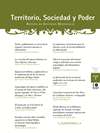Resumen
Resumen: Se estudia un tablero de cancel procedente de la iglesia de San Tirso de Candamo (Asturias). La documentación recoge su existencia en el siglo viii y su fundador es el noble Leminio. La iconografía de la placa nos refleja los tres árboles bíblicos y el misterio de la Trinidad, árbol de la vida recogido en las Sagradas Escrituras en el que se expresa uno de los problemas de mayor trascendencia politicorreligiosa de la Alta Edad Media hispana: la controversia adopcionista, en la cual se debatía la naturaleza trinitaria de la divinidad. En el cancel se representan variados motivos fitomorfos: dobles palmetas, flores de lis, hojas lanceoladas, etcétera, relieves que son recogidos en variedad de modelos escultóricos procedentes de la región astur: San Martín de Salas (951), Deva (siglo x) y Valdediós (año 893), con influencias de la región leonesa: San Román de Hornija (891), Escalada (913), San Cebrián de Mazote (915), Santa María de Wamba (siglo x), etcétera. El cancel representa, pues, un pujante arte en el cruce de varias tradiciones.
Palabras clave: árbol de la vida, tablero de cancel, misterio trinitario, adopcionismo, arte asturiano, Asturias, Pravia, Candamo, arte cristiano medieval, liturgia.
Abstract: The object of study is a cancellum plank which proceeds from the San Tirso de Candamo church (Asturias, Spain). The documentation collect its existence in the 8th century, and acknowledges the noble Leminio as its founder. The iconography of the plaque shows us the three biblical trees and the mystery of the trinity. It is a tree of life collected in the holy scripture. Such tree expresses one of the most transcendental political and religious problem of the high Spanish middle age: the adoptionist controversy, in which the Trinitarian nature of divinity is discussed. Represented in the cancellum are varied phitomorfic motives: double palms, lys flowers, lancet leaves, etc. Such relieves are collected in a variety of sculptural models which proceed from the asturian region: San Martín de Salas (951), Deva (10th century), Valdediós (893), with influences taken from the region of León: San Román de Hornija (891), Escalada (913), San Cebrián de Mazote (915), Santa María de Wamba (10th century), etc. Thus, the cancellum represents a rising art in the crossing of various traditions.
Key words: local headquarters, origin of power, rural monasteries, tree of life, cancellum plank, Trinitarian mystery, adoptionism, Asturian art, Asturias, Pravia, Candamo, christian medieval art, liturgy.

